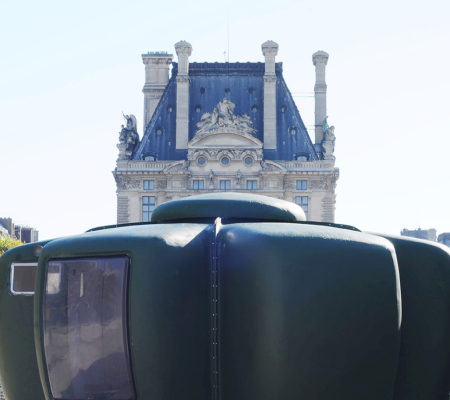Jean Maneval
1923-1986In 1956, France made considerable conceptual and technical progress when it presented the first house made out of plastic materials. Thanks to the architect Ionel Schein, this project was able to be completed and was enthusiastically received across the world.” Presented at the Salon des Arts Ménagers (domestic household arts fair) in 1956, this house remained a prototype. It was not until the project of urban architect and theorist Jean Maneval (1923-1986) that a housing unit entirely made of synthetic material was mass produced and commercialised.
Designed in 1965 and industrialised as from 1968 by the company Batiplastique, Jean Maneval’s “six shell” bubble was used to equip an experimental holiday village set in Gripp in the Hautes-Pyrenees. This ensemble is made up of twenty identical “bubble-houses”, factory-built, requiring minimum installation at the building-site and which, thanks to their shape and their colour (white, green, brown) blend perfectly with the landscape. Each pod is made up of six shells, which are joined together by waterproof, easily-removable seals, and is suspended on a metal framework, which rests on a concrete base and supports the floor. A spherical cap tops the whole. The shells are made out of methacrylate reinforced polyester. Having saved and displayed the architectural elements of Jean Prouvé on the one hand, and having been helped by Jean-Philippe Mercier’s research on the other, it seemed obvious that it was necessary to protect Jean Maneval’s holiday houses in Gripp. As if both had intended, from Jean Prouvé’s “emergency units” to Jean Maneval’s six-shell bubble houses, with their ideal surface area of 36mÇ, the continuity of process appears as obvious.
From Jean Prouvé’s easily dissembled housing to Jean Maneval’s mobile housing, beyond the strict style, there is unity in the gesture, the intention and the project.








